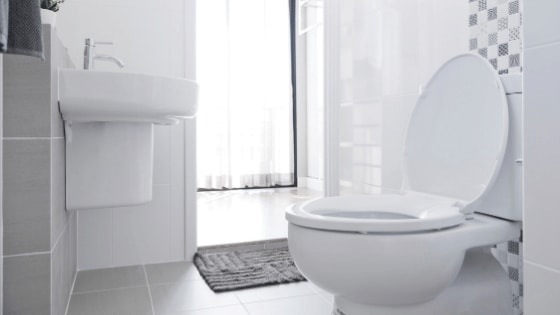Why Homeowners Are Upgrading Their Toilets
Today’s toilets offer more than just flushing waste. From saving water to added comfort features, the right model can transform your bathroom experience and add value to your home.Features that make a big difference:- Water-Saving Designs: High-efficiency models use as little as 1.28 gallons per flush—saving up to 10,000 gallons a year compared to older 3.5–7 gallon models.
- Smart Bidets: Enjoy hands-free cleaning, warm water, air drying, and self-cleaning nozzles. Popular for hygiene and accessibility.
- Heated Seats: No more cold porcelain on winter mornings.
- Comfort-Height Models: Chair Height (17-19″) toilets are easier on the knees, especially for older adults or anyone with mobility concerns.
- Sleek Styles: Clean lines and compact models make the most of tight spaces.
Key Things to Know Before Installing a New Toilet
If you’re considering a DIY install or shopping for a new model, keep these essentials in mind:1. Water Efficiency Impacts Your Utility Bill
Toilets can account for up to 30% of your home’s indoor water use, according to the EPA’s WaterSense program. Older units (such as those with 7-gallon tanks) might flush 13,000+ gallons per year, while new models use closer to 2,300 gallons per year. That’s a significant drop in annual water use, which means major savings on your utility bill.2. Bowl Shape Affects Comfort and Space
There are two different toilet bowl shapes: elongated vs. round. Each option has benefits depending on comfort, space, and bathroom needs.Elongated, Oval-Shaped Bowls:
PROS- Provide a larger seating area for added comfort
- Often recommended for accessibility and ease of use
- Can improve flushing performance
- Offer a more modern look
- Require more physical space than round bowls
Round Bowls:
PROS- Take up less room, ideal for compact bathrooms
- Fit better in smaller or older bathroom layouts
- Typically cost less than elongated bowls
- Provide a classic, traditional appearance
- Have smaller seat sizes that may feel less comfortable
3. Toilet Seat Height Should Fit Everyone in the Home
Choosing the right toilet height can make a big difference in daily comfort and usability for everyone in your home.- 14″ Standard Toilet Height: This traditional height fits most bathrooms and works well for children and shorter adults. Taller or older users might find that sitting down and standing up requires more effort.
- 16″ Comfort-height models: These models are taller, closer to the height of a regular chair. This makes sitting down and standing up easier for many people.
- 17–19” ADA-compliant models: These models meet accessibility standards and are often a smart long-term choice (even for younger homeowners) because of flexibility for mobility, guests, and future needs like aging-in-place renovations.
4. Measure the Space Before You Shop
Most building codes require the following measurements:- A distance of at least 15 inches from the toilet’s center to the nearest wall or fixture
- A distance of at least 24–30 inches of clear space in front of the toilet for comfortable use
5. Choose the Right Flush System
When choosing a new toilet, understanding the flushing system can help you pick one that fits your needs. Two common types are gravity-flush and pressure-assisted flush toilets.- Gravity-Flush Toilets: Use gravity to move waste through the trapway. They’re quieter and easier to maintain but can clog more easily than pressure-assisted models.
- Pressure-Assisted-Flush Toilets: Use compressed air to boost flush power, clearing waste more effectively with less water. They’re louder and pricier but excel in heavy-duty performance.
Skip the DIY Risks—Use a Trusted Plumber
Toilet installation might look simple—but small mistakes can lead to major repairs. Improper seals, uneven floors, or bad flange connections can cause hidden leaks, unpleasant odors, and costly water damage.Here’s what can go wrong with a DIY installation:- Leaks or flooding: A poorly sealed wax ring or misaligned flange can cause water to leak beneath the toilet—damaging your subfloor, causing mold growth, or even staining ceilings below.
- Unstable seating or rocking: Uneven floors or over-tightened bolts can lead to a toilet that rocks, loosens over time, or cracks the porcelain base.
- Clogs or poor flushing: An improperly connected drain or vent line can lead to chronic clogging, slow drainage, or incomplete flushing—especially in low-flow models.
- Costly repairs or replacements: DIY fixes gone wrong often require a plumber to remove and reinstall everything—doubling the cost and the hassle.
- Voided warranties: Some toilet manufacturers require professional installation to keep warranty coverage valid.



